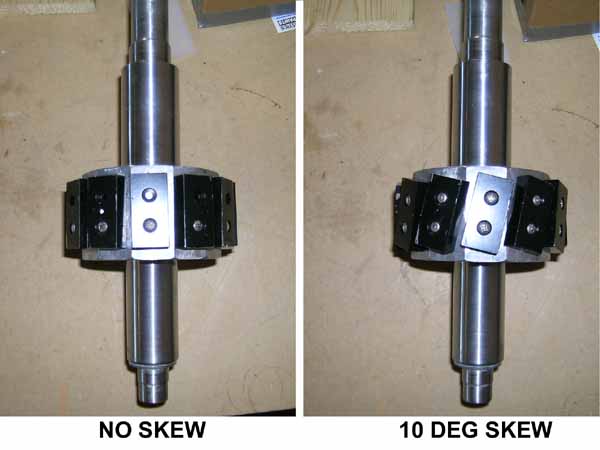I completed my two generators, one axial, one a motor conversion, last month. I'd begun slowly, but the projects both picked up speed at the same time, and there was some harmony in finding little things like fasteners that helped.
What I did recently finish was a written description the conversion. I've linked to the document below. I think I'll also post the contents in separate diaries, to allow searching. I have only begun performance testing the conversion, so those results will be added later.
3HP 3 Phase Motor Conversion (1Mb)
The other interesting thing I did this weekend was experiment with motor-conversion cogging. After a few attempts to illustrate the matter, I'm now in a position to demonstrate the phenomenon with my own. I hope that the following explanation will help those who are new to the topic to understand the problem.

I started with magnets on all 12 faces of the rotor aligned with the axis. No skewing at all. Inserting the rotor and assembling the faceplate went fine, and when I attempted to turn the shaft by hand it was obvious what was going on. I could rotate it one "step" at a time, 36 steps per revolution.
I then wrapped a string around the 1-1/4" shaft and pulled with a spring-scale. It took 25 pounds to start the rotor turning against the first step. Once it got going, it took 11 pounds to keep it going at a constant speed.
Later, I disassembled the rotor again and skewed all 12 magnets. I fixed the skew angle at 10 degrees by tapping holes in each rotor face with a slant. The 10 degrees refers to a view looking down the shaft of the rotor. You can see one end of the magnet and in your mind's eye draw a line down to the axis. You can also draw a line down from the back end of the magnet and it is turned 10 degrees away. The 10 degrees works on a motor whose stator has 36 teeth (360 deg / 36 teeth = 10 degrees). If your stator has 24 teeth, then your magnets need a (360/24) 15 degree skew.
I re-inserted the rotor with all skewed magnets and performed the same pull test. The "steps" were much smoother, and to start the rotor took 14 pounds, and 8 to keep it going. The starting torque has nearly been cut in half, and the running torque is also down by 1/3.
As a last test, I removed 4 magnets, leaving the remaining 8 skewed. As expected, the pull test gave starting and running torque numbers 2/3 of the results with 12 magnets. The extra torque required to start was never equal to the running torque, but I don't think there is a point where that occurs because even the bearings behave that way. I always takes a bit more oompf to get going, than to keep going.